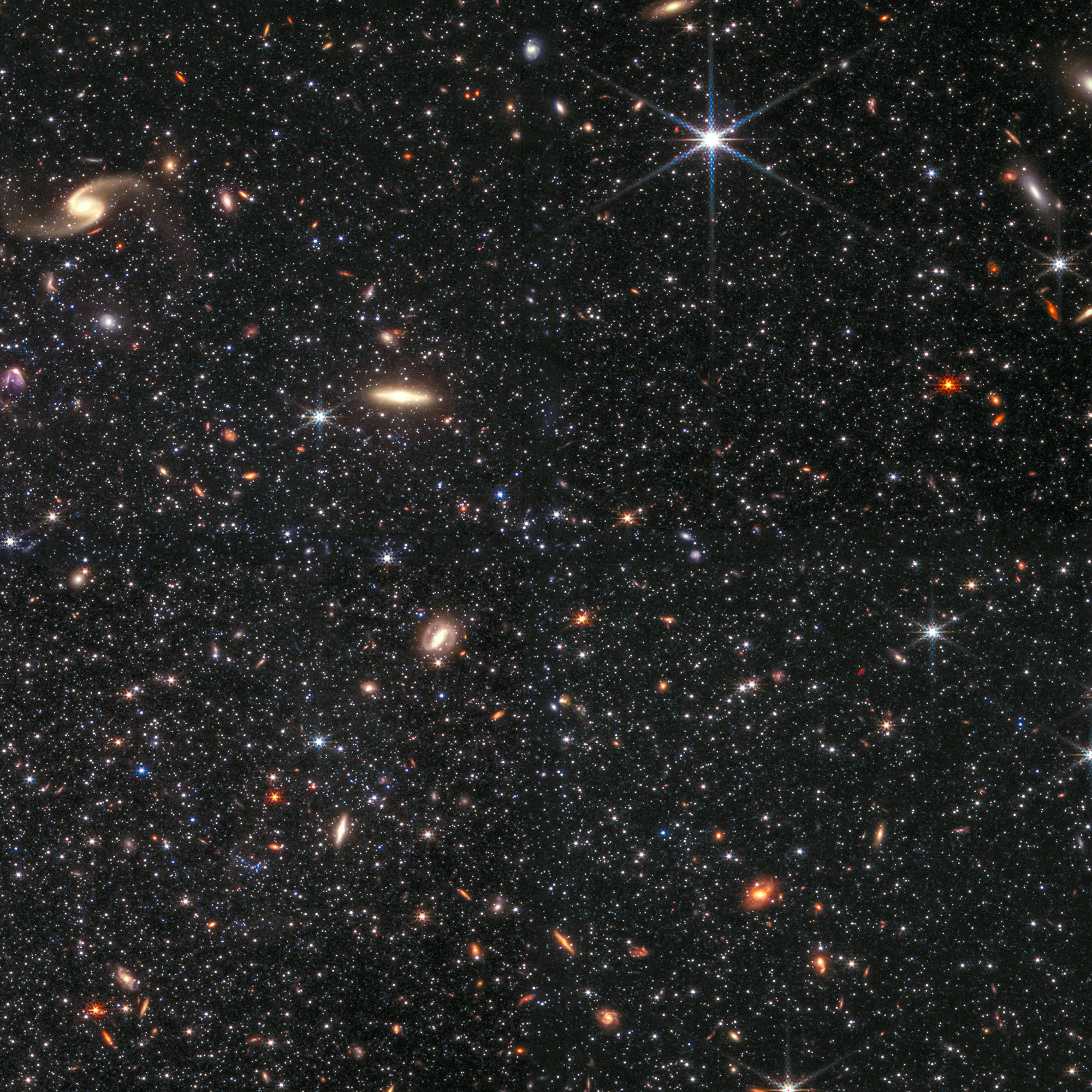James Webb Space Telescope captures a sparkling dwarf galaxy
NASA's latest James Webb Space Telescope image is a stunning dwarf galaxy outside the Milky Way

We'll admit it – we're a bit obsessed with the James Webb Space Telescope here at Digital Camera World. While we'd usually be focusing our attention on earth-made images, there's something truly compelling about looking at images from the furthest reaches of space or just outside our everyday lives.
Following the last "Cosmic Tarantula" image released in time for Halloween, the latest image shared by NASA on the James Webb Space Telescope gallery page shows "a portion of the dwarf galaxy Wolf–Lundmark–Melotte (WLM)" which gives us an idea of the telescope's amazing ability to resolve faint stars outside of the Milky Way – the galaxy that includes our own Solar System.
One of the best things about the official Webb website is that each image is accompanied by a scientific explanation, in terms that make it easy to understand what's going on in the picture. In this image, information comes from Kristen McQuinn of Rutgers University, one of the lead scientists on Webb Early Release Science (ERS) program 1334, focused on resolved stellar populations.
"WLM is a dwarf galaxy in our galactic neighborhood," she explains. "It’s fairly close to the Milky Way (only about 3 million light-years from Earth), but it’s also relatively isolated. We think WLM hasn’t interacted with other systems, which makes it really nice for testing our theories of galaxy formation and evolution."
This stunning image was shown at a planetarium, and Kristen goes on to say how incredible the experience was. "I will never look at these images the same again. Seeing this on the dome, it was like looking up at our own night sky – at the Milky Way – from a dark site. I could imagine that we were standing on a planet in the WLM galaxy and looking up at its night sky."
Of course, in terms of imaging, the James Webb Space Telescope is nothing like the best deep-space telescopes that we generally buy to gaze up at the night sky, or like the best camera for astrophotography.
Images like this have been taken by The Near Infrared Camera (NIRCam), Webb's primary imager that covers infrared wavelengths of light ranging from 0.6 to 5 microns. As well as fascinating scientists and the general public alike, it will also help astronomers with future observations. "We’re checking the calibration of the NIRCam instrument itself. We’re checking our stellar evolution models. And we’re developing software to measure star brightnesses," says Kirstin.
Why not view the full-resolution version of this dwarf galaxy Wolf–Lundmark–Melotte (WLM) image so that you can immerse yourself in all of its detail?
Get the Digital Camera World Newsletter
The best camera deals, reviews, product advice, and unmissable photography news, direct to your inbox!
And if you want to see more Webb image releases, head to the James Webb Space Telescope gallery, where you can see all of Webb's first images and learn more about what they depict. NASA will be launching new images regularly.
We'll report on more James Webb Space Telescope images as they get released, from the angle of imaging than the subjects themselves.
If you're feeling inspired, why not try deep-space photography yourself, and check out the best telescopes for watching the night sky at home?

Lauren is a writer, reviewer, and photographer with ten years of experience in the camera industry. She's the former Managing Editor of Digital Camera World, and previously served as Editor of Digital Photographer magazine, Technique editor for PhotoPlus: The Canon Magazine, and Deputy Editor of our sister publication, Digital Camera Magazine. An experienced journalist and freelance photographer, Lauren also has bylines at Tech Radar, Space.com, Canon Europe, PCGamesN, T3, Stuff, and British Airways' in-flight magazine. When she's not testing gear for DCW, she's probably in the kitchen testing yet another new curry recipe or walking in the Cotswolds with her Flat-coated Retriever.
